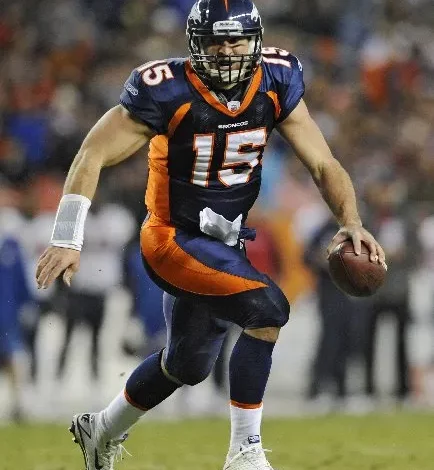The 2024 NFL season presented Caleb Williams, the Chicago Bears’ dynamic young quarterback, with a formidable challenge: he took a league-high 68 sacks, a figure that starkly highlighted both team weaknesses and individual areas for growth. While many eyes immediately pointed to the offensive line’s struggles in pass protection, a deeper analysis reveals that Williams’ own processing speed and decision-making under pressure also played significant roles.
As the Bears prepare for the 2025 season, this dual focus—strengthening the offensive line and accelerating Williams’ mental game—has become a priority, particularly during Organized Team Activities (OTAs) and the upcoming minicamp. This article delves into the factors behind Williams’ sack total, explores the steps being taken to address these issues, and examines how improving decision-making under duress could redefine his career trajectory.
The Sack Epidemic: Understanding the Numbers
Taking 68 sacks in a single season is not just a statistic; it’s a glaring symptom of a team’s offensive struggles. In 2024, Caleb Williams faced relentless pressure from opposing defenses, setting a league-high that reflected both the durability of defenders and vulnerabilities within the Bears’ offensive front.
Related Articles
An Ohio State great. A brand-new series. Andy Katzenmoyer headlines the debut of 12th Warrior Happy Hour — a conversation exclusive with our biggest supporters.
4 hours ago
Ohio State is hosting three official visitors this weekend and two five-star prospects from the 2027 class.
4 hours ago
From a surface level, sacks often point to issues with the offensive line—whether that’s poor blocking assignments, missed blocks, or an inability to hold defenders long enough for plays to develop. In Chicago’s case, the offensive line was indeed culpable. The Bears’ pass protection frequently faltered against aggressive rushers, exposing Williams to repeated hits.
However, simply blaming the offensive line would be an incomplete assessment. Quarterbacks also share responsibility for their own protection. Quick decision-making, recognizing blitzes, and releasing the ball promptly are crucial to minimizing sacks. This is where Williams’ struggles with processing speed became apparent.
Processing Speed and Decision-Making: The Quarterback’s Mental Game
Processing speed refers to a quarterback’s ability to read defenses, anticipate pressure, and make rapid, accurate decisions. In today’s NFL, where defensive schemes are increasingly complex and blitz-heavy, a QB’s mental agility is as vital as physical skills.
In 2024, Williams faced challenges in this area. His processing speed lagged behind what the pace and complexity of NFL defenses demanded. This meant he often held onto the ball longer than ideal, leading to more sacks and fewer opportunities for successful plays.
Coaches and analysts noted that Williams occasionally struggled to quickly identify hot routes, adjust protections on the fly, or sense when to scramble or throw the ball away. These hesitations can snowball under pressure, increasing the likelihood of sacks or turnovers.
Offensive Line Issues: The Other Half of the Problem
While Williams’ mental game was a key factor, the Bears’ offensive line shortcomings cannot be overlooked. The 2024 unit was frequently overwhelmed by defensive pressure, missing assignments, or failing to provide consistent pocket integrity.
Injuries, lack of cohesion, and insufficient depth contributed to the struggles. Opposing teams exploited mismatches and pressured Williams relentlessly, disrupting the rhythm of the offense and forcing the young QB to face overwhelming odds.
Understanding this context is essential: even the best quarterbacks can struggle when their offensive line cannot provide basic protection. The Bears’ front office recognized this, taking significant steps to improve the line in the offseason through key acquisitions and draft picks.
Steps Taken During OTAs: Focusing on Decision-Making Under Pressure
Recognizing the importance of improving both physical protection and mental processing, the Bears’ coaching staff made Caleb Williams’ decision-making under pressure a primary focus during the 2025 offseason’s Organized Team Activities.
At OTAs, Williams has been working intensively on film study, mental reps, and situational drills designed to accelerate his recognition skills. Coaches have emphasized drills that simulate blitzes, varied defensive looks, and time-sensitive decisions, helping Williams develop faster reads and quicker release times.
Additionally, Williams has worked with sports psychologists and cognitive coaches to improve his mental processing speed and resilience. The goal is to not only improve physical reaction but also build confidence and decisiveness under duress.
Minicamp and Beyond: Continuing the Development Journey
OTAs serve as a foundation, but the Bears know that lasting improvements come with sustained effort. As minicamp approaches, Williams’ ability to apply these lessons on the field will be closely evaluated.
Minicamp offers a more intense and realistic environment, where Williams can practice his reads against live defensive pressure and integrate quicker decision-making into real-time gameplay. The coaching staff plans to continue emphasizing:
Pre-snap Reads: Helping Williams anticipate defensive shifts and blitzes before the snap.
Post-snap Adjustments: Training to quickly react to pressure by checking down, throwing the ball away, or scrambling.
Pocket Awareness: Enhancing his ability to maneuver within the pocket to avoid sacks without sacrificing focus on downfield targets.
Communication: Ensuring strong coordination with the offensive line and receivers to manage protections and route timing.
The Bears’ investment in these areas signals a commitment to turning Williams into a more polished, efficient quarterback capable of thriving despite adversity.
The Broader Implications: Why This Matters for Williams and the Bears
Improving Williams’ processing speed and decision-making under pressure isn’t just about reducing sacks. It’s about elevating the entire Bears offense and positioning Chicago as a legitimate contender in the NFC.
Quarterbacks who can navigate pressure effectively tend to have higher completion percentages, fewer turnovers, and better leadership presence on the field. They inspire confidence in teammates and can change the dynamic of a game by extending plays and making smart choices.
For Williams, mastering this mental aspect could mark the difference between a promising rookie season and becoming an elite NFL quarterback. His physical tools—arm strength, mobility, and athleticism—are already impressive. Now, it’s about sharpening his mind to match his physical skills.
For the Bears, a more confident, quicker-processing Williams means better offensive production, sustained drives, and a more balanced attack that can challenge even the league’s best defenses.
Supporting Moves: Building Around Williams
The Bears’ front office has complemented their work with Williams by addressing the offensive line woes that contributed to the sack problem. Major offseason moves include signing veteran linemen, drafting promising prospects, and improving offensive schemes to provide better protection.
These efforts aim to create a safer pocket environment, allowing Williams to execute plays with less fear of immediate pressure. When combined with his improved mental processing, the result could be a significantly more efficient offense.
Looking Ahead: Challenges and Opportunities
Despite these promising steps, the path forward won’t be without obstacles. The NFL’s defensive talent only grows more sophisticated each year, and Williams will face relentless pressure from all angles.
Maintaining focus, absorbing coaching feedback, and continually adapting his game will be critical. The Bears must also maintain a strong supporting cast and solid offensive line to prevent past mistakes.
However, the potential payoff is substantial. If Williams successfully enhances his decision-making speed and the Bears continue to improve protection, they could transform their offense into one of the league’s most formidable units.
Growth, Resilience, and the Road to Success
Caleb Williams’ 2024 sack total exposed significant challenges for both him and the Chicago Bears, highlighting the intersection of physical protection and quarterback mental processing. Yet, the focus during OTAs and upcoming minicamp reveals a team and player committed to growth, resilience, and overcoming adversity.
By sharpening his decision-making under pressure and benefitting from improved offensive line play, Williams is positioned to take the next crucial step in his NFL career. For Bears fans, this developmental journey promises an exciting season ahead—one where the quarterback’s mental and physical evolution could propel the team toward greater success.
The road won’t be easy, but with the right support and relentless effort, Caleb Williams and the Bears can rewrite the narrative, turning a sack-plagued season into a launching pad for excellence.
With Product You

